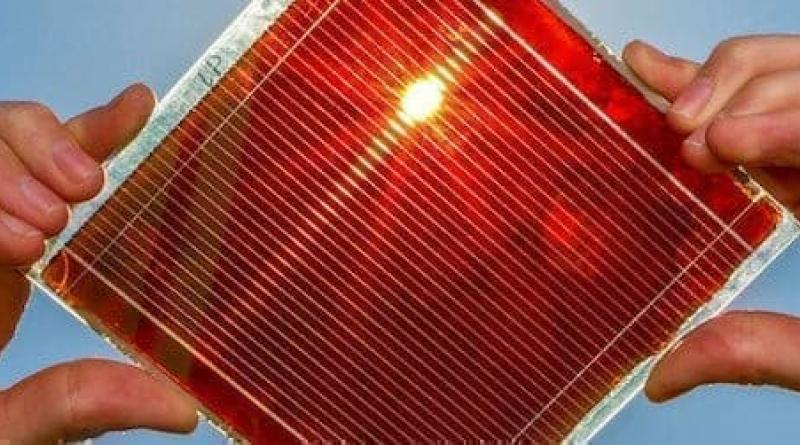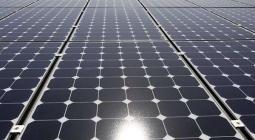Solar Windows Will Soon Become A Commercial Reality.

Last year, the United Nations sent out a grim warning: The world has a very short 10-year window to act to avert catastrophic and irreversible climate change. Not surprisingly, the clean energy drive has gone full circle as the ongoing ESG investment craze is now proving amidst the worst pandemic in modern history. By and large, fossil fuels still power the global economy, but are rapidly being shunned in favor of renewable energy sources such as wind, solar and geothermal. At a time when the oil and gas sector is facing its worst existential crisis in modern history, the demand for renewable energy has continued to grow unabated.
Renewable energy truly is having its moment in the sun, with previously arcane subjects such as hydrogen power, solar windows and even anti-solar panels enjoying a grand renaissance--and every little bit counts.
Solar windows have frequently been dismissed as yet another hare-brained attempt by overreaching clean energy buffs to promote renewables at the expense of fossil fuels. Yet, this homely technology might play a significant role in our fight against climate change in the not-so-distant future.
Perovskite solar windows
To most of us, windows are little more than standard home apparatus consisting of glass panes that let light in and keep bad weather and other elements out. However, scientists now view our windows as a chance to take passive parts of our buildings and transform them into active power generators of clean power.
Engineers have developed a semi-transparent solar cell that will allow our windows to double up as solar panels that can transform both our architecture and energy production.
Solar windows are exactly what they sound like: Transparent windows that are capable of absorbing sunlight and turning it into useful electricity. Instead of the standard silicon--which is deep blue and completely opaque--solar windows use perovskite solar cells (PSCs) to harvest electricity like most conventional solar panels. Indeed, just two square meters (around 22 square feet) of the next-gen PSCs tinted to the same degree as current glazed commercial windows would be enough to generate as much electricity as a standard solar panel--somewhere in the region of 140 watts per meter.
That is not too far from your typical solar panel, which is capable of producing around 320 watts of power. Indeed, the best solar panels in the current year are capable of producing anywhere from 285 watts to 360 watts.
But before that, a little about the wonder crystal we call perovskite.
Perovskite solar cells
Harnessing the motherlode of the sun’s power is almost within our reach.
The sun, our primary source of energy, bathes our Blue Planet in more solar energy than we can ever hope to reasonably use. Each hour, the sun sends 430 quintillion Joules of energy our way, more than the 410 quintillion Joules that humans consume in a whole year. With the sun likely to be around for another five billion years or so, we have a virtually unlimited source of energy--if only we could tap it efficiently.
Unfortunately, we are currently only able to harness a minuscule amount of this energy due to technical limitations.
But that is about change, thanks to advances in one wonder-crystal--perovskite.
The U.S. Department of Energy’s (DOE’s) National Renewable Energy Laboratory (NREL) has forged a public-private consortium dubbed the US-MAP for US Manufacturing of Advanced Perovskites Consortium, that aims to fast track the development of low-cost perovskite solar cells for the global marketplace.
Silicon Panels
According to the IEA, solar power supplied just 592GW, or a mere 2.2%, of the world’s 26,571GW in electricity consumption in 2018. That was after an impressive 20% growth in global PV installations to the tune of nearly 100GW.
More than 90% of those photovoltaic (PV) panels installed were constructed from crystallized silicon.
Silicon panels have their advantages: They’re quite robust and relatively easy to install. Thanks to advances in manufacturing methods, they’ve become quite cheap over the past decade, particularly the polycrystalline panels constructed in Chinese factories.
However, they suffer from a major drawback: Silicon PV panels are quite inefficient, with the most affordable models managing only 7%-16% energy efficiency depending on factors like placement, orientation, and weather conditions. Si panels are wafer-based rather than thin-film, which makes them sturdier and durable, but the trade-off is a sacrifice of efficiency.
To meet the world’s rapidly growing energy appetite--and achieve the kind of de-carbonization goals that would help slow the impact of climate change--it would take hundreds of years to build and install enough silicon PV panels.
This is way too slow, given that we have a mere 10-year window to act to avert irreversible and catastrophic climate change.
More critically, the best (and most expensive) silicon panels to-date boast an efficiency rating maximum efficiency rating of 26.7%, pretty close to the theoretical maximum of 29.1%.
For years, scientists have experimented with alternative crystal formations that would allow panels of similar size to capture more energy. Until now, few designs emerged that were commercially viable, particularly thin-film cells that could theoretically achieve much higher levels of efficiency.
Thin-film PV panels can absorb more light, and thus produce more energy. These panels can be manufactured cheaply and quickly, meeting more energy demand in less time. There are a few different types of thin-film out there, all of them a little different from standard crystalline silicon (c-si) PV panels.
Amorphous silicon (a-Si) panels are the oldest form of thin-film: a chemical vapor deposits a thin layer of silicon onto glass or plastic, producing a low weight panel that isn’t very energy efficient, managing 13.6%. Then there are cadmium telluride (CdTe) panels, which use the cadmium particle on glass to produce a high-efficiency panel.
The drawback there is the metal cadmium, which is toxic and difficult to produce in large quantities.
These panels are usually produced using evaporation technology: the particles are superheated and the vapor is sprayed onto a hard surface, such as glass. They are thin, but not as dependable or durable as c-si panels, which currently dominate the market.
NREL Perovskite Breakthrough
Perovskite has now managed to break the efficiency glass ceiling.
Perovskites are a family of crystals named after Russian geologist Leo Perovski, “perovskites.” They share a set of characteristics that make them potential building blocks for solar cells: high superconductivity, magnetoresistance, and ferroelectricity. Perovskite thin-film PV panels can absorb light from a wider variety of wave-lengths, producing more electricity from the same solar intensity.
In 2012, scientists finally succeeded in manufacturing thin-film perovskite solar cells, which achieved efficiencies over 10%. But since then, efficiencies in new perovskite cell designs have skyrocketed: recent models can achieve 20%, all from a thin-film cell that is (in theory) much easier and cheaper to manufacture than a thick-film silicon panel.
At Oxford University, researchers reached 25% efficiency; a German research team has achieved 21.6%, while a new record was set in December 2018, when an Oxford lab reached 28% efficiency.
The National Renewable Energy Laboratory NREL has been able to build composite Silicon-Perovskite cell by putting perovskites atop a silicon solar cell to create a multijunction solar cell, with the new cell boasting an efficiency of 27% compared to just 21% when only silicon is used.
But perhaps more significant is that the organization has been able to boost the longevity of Perovskite solar cells by altering their chemical composition to overcome light-induced phase-segregation-- a process through which the alloys that make up the solar cells break down when exposed to continuous light.
The great news: Scientists see perovskite solar cells eventually attaining an efficiency of about 40%. In other words, future solar cells could be up to 50% more powerful than the best models currently available.
Low-Cost Perovskite Panels
Solar power has become more affordable, accessible, and prevalent than ever before thanks to technology improvements, competitive procurement, and a large base of experienced, internationally active project developers.
According to the International Renewable Energy Agency (IRENA), solar power generation is now fully competitive with fossil fuel power plants, with the global weighted average levelized cost of electricity (LCOE) for utility-scale solar PV cells having declined 75% to below USD 0.10/kWh since 2010.

However, there’s still work to be done.
At an LCOE of $0.085/kWh for photovoltaic cells and $0.185/kWh for concentrating solar projects, solar power(utility-scale + residential rooftop) remains more expensive than other renewable sources including hydro, onshore wind, geothermal and bioenergy.
US-MAP plans to solve issues mainly regarding manufacturing and durability and also tackle sustainability issues mainly relating the use of lead and other metals. The consortium will focus on funding from federal sources and also explore private-sector financing.
Hopefully, it will be able to make this IEA prediction a reality by making solar power one of the cheapest, if not the cheapest, ways to generate electricity by 2025.
The bottom line
The long and short of it: Solar windows offer a vast potential as an energy source.
Just come to think of it: We could easily generate 40% of our electricity needs if every rooftop in the U.S. had solar panels installed. Now imagine what we could do if we could not only use solar cells on our rooftops but also on vertical façades such as walls and windows, too.
The verdict: We could reach nearly 100% total electricity generation on building-integrated solar alone.
Don’t be surprised if the likes of Tesla Inc. (NASDAQ:TSLA) start selling you solar windows a few years down the line. After all, Tesla has a solar roof already.
13 September 2020
Oilprice.com




